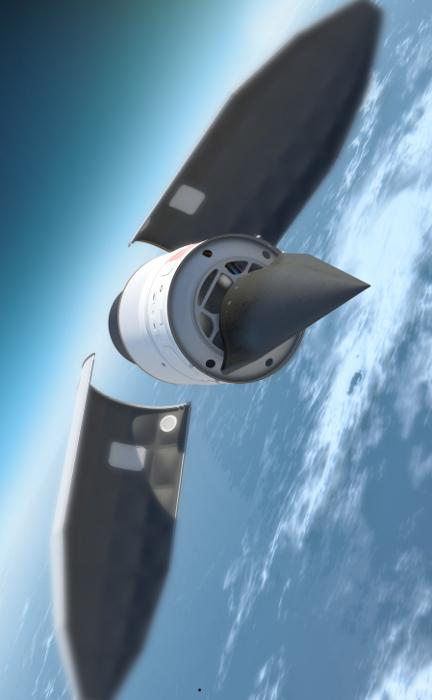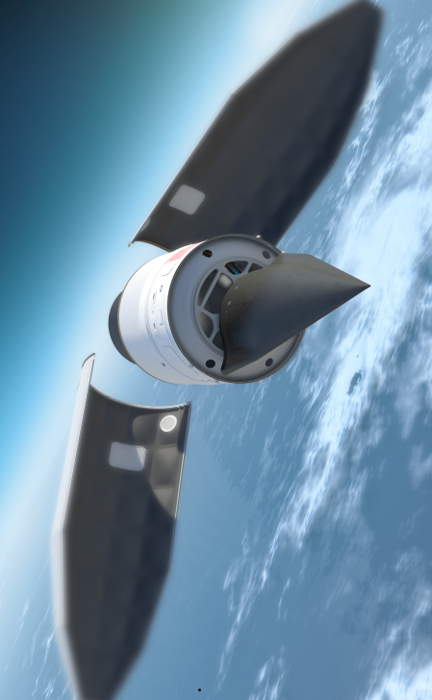Last year the fastest plane ever built disappeared less than 10 minutes after takeoff. Several months later, military engineers say they now understand what went wrong.
When the Falcon Hypersonic Technology Vehicle 2 (HTV-2) blasted off from California’s Vandenberg Air Force Base on Aug. 11, 2011, engineers were pleased with the speed it could achieve—an astonishing 13,000 mph. Unfortunately, the test flight didn’t last long. Much like the Falcon’s first incarnation the year before, researchers lost track of the unmanned vehicle within minutes.
An engineer review board from DARPA (Defense Advanced Research Projects Agency) recently released findings from their seven-month analysis of the short but groundbreaking test flight. Researchers say the investigation has granted a better understanding of hypersonic design, and new insight into the materials necessary to build such fast vehicles.
According to a statement from DARPA program manager, Air Force Maj. Chris Shultz, “Only actual flight data could have revealed this to us.”
For safety, engineers designed the Falcon to dive into the ocean if and when control was lost. The HTV-2 managed to stay aloft more than twice as long as its predecessor, but engineers determined that it was eventually overcome by shockwaves. Video simulation of the test flight portrays the HTV-2 rolling over and plunging into the water at the end of its brief life.
Some have characterized the HTV-2 as a failure, but an in-depth analysis shows the Falcon didn’t give up without a fight. According to DARPA officials, the HTV-2 was able to recover from several shockwave disturbances, and “exceeded by more than 100 times what the vehicle was designed to withstand.”
Researchers say the most probable cause of flight termination was “unexpected aeroshell degradation.” In other words, the hypersonic craft became a victim of its own thermal-protective skin.
DARPA predicted that some of the Falcon’s thermal shell would inevitably peel off at such extreme speeds, but they didn’t anticipate that the pieces would be so large. Traveling at a previously unthinkable 3.6 miles per second, engineers say the peeling portions upset the aerodynamic integrity of the craft, resulting in shockwaves so strong that it simply could not recover.
Shultz says this information has “revealed new knowledge about thermal-protective material properties and uncertainties for Mach-20 flight inside the atmosphere.” He says engineers will use the analysis to better characterize thermal materials and modify future designs.
There is definitely a trial and error quality to Falcon engineering, but DARPA says high-Mach flight in the atmosphere “is virtually uncharted territory.” Even so, at a time when many military research projects are facing big budget cuts, the Pentagon continues to stand behind work toward a reliable Falcon.
DARPA recently cut back on the number of research projects it will pursue, but intends to keep attention focused on hypersonics, and advancing “critical technologies to make long-duration hypersonic flight a reality.” The agency hopes to satisfy a need for speed as part of Prompt Global Strike (PGS)—a controversial Pentagon project that aims to hit any target on Earth in under an hour.
To achieve this goal, engineers say further analysis and ground testing using flight data are needed. DARPA says these efforts will inform policy, acquisition, and operational decisions for future PGS initiatives.







